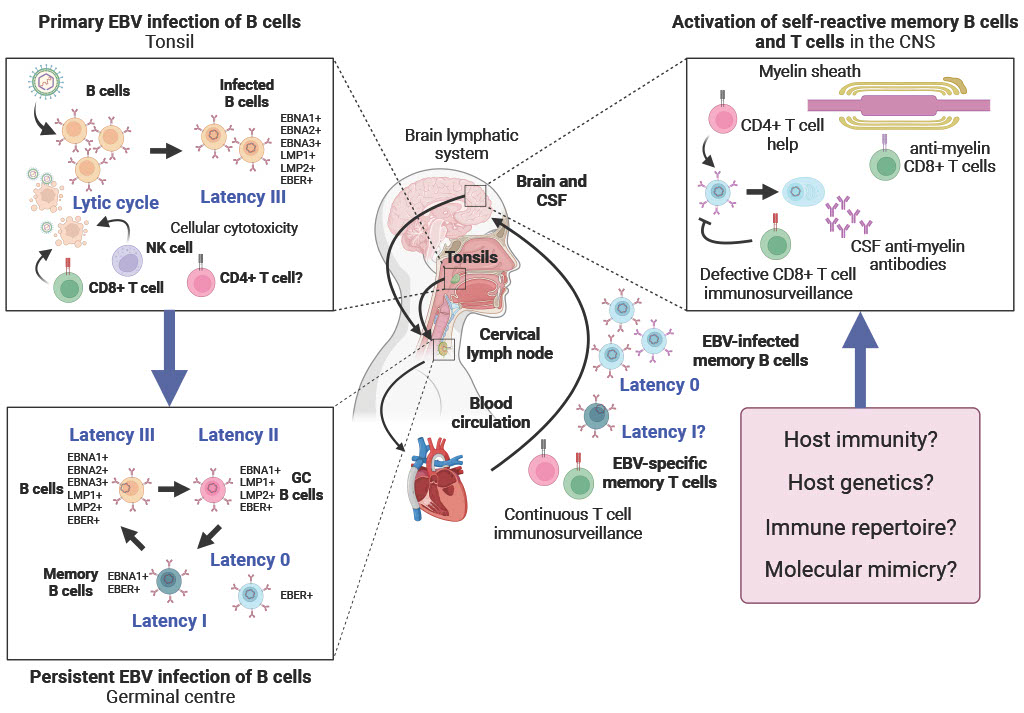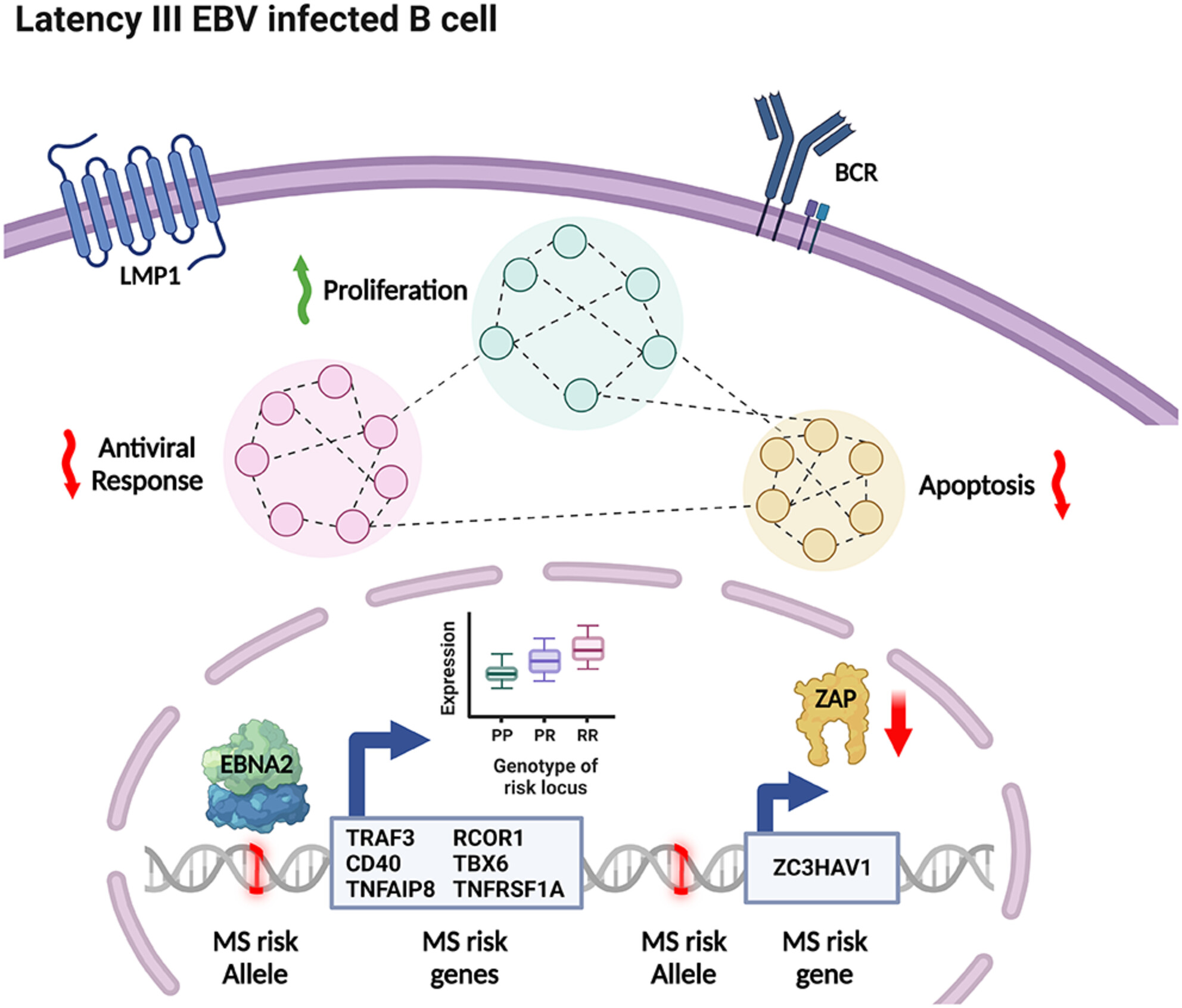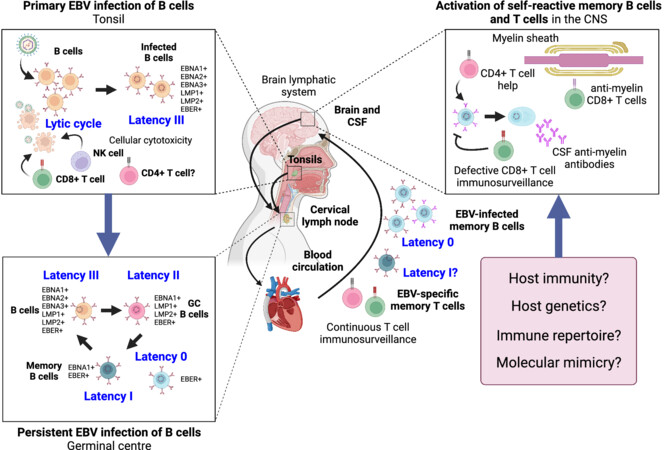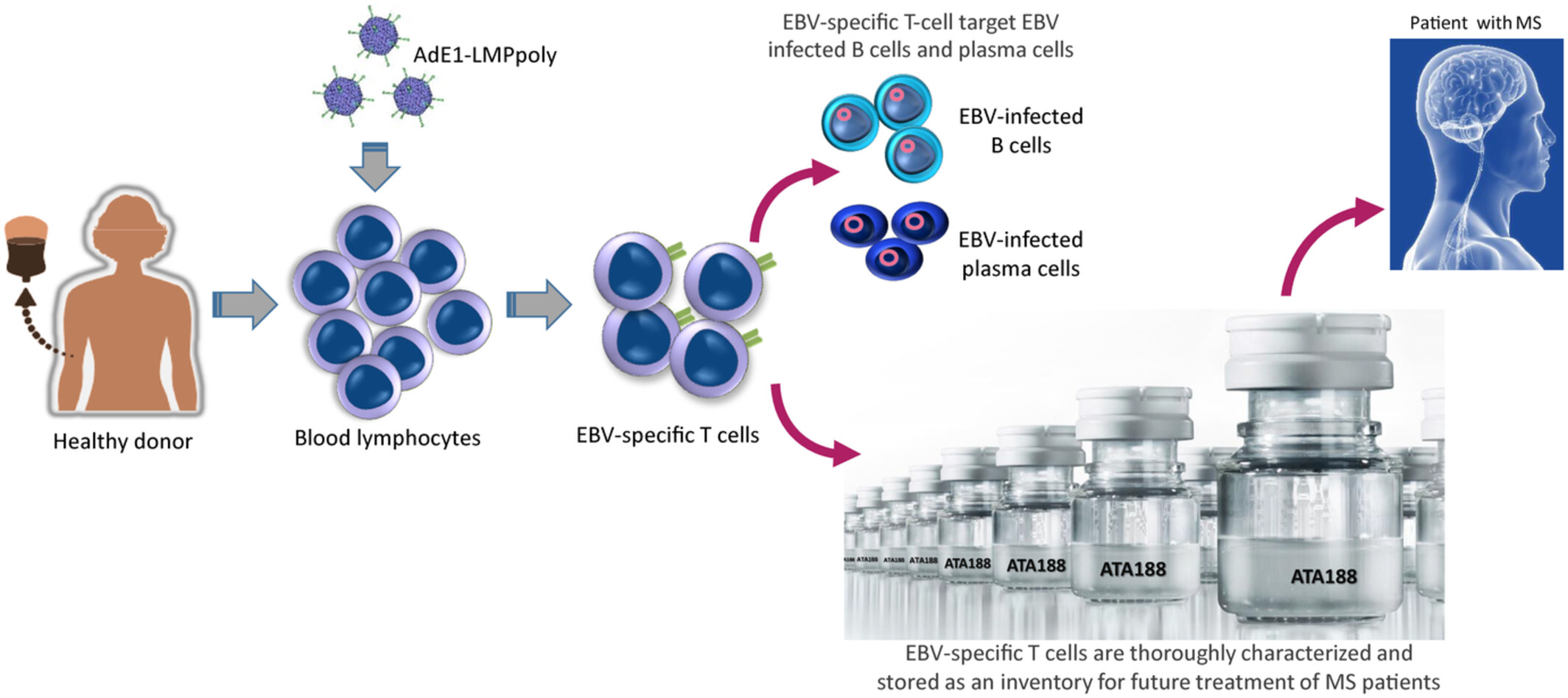EDITORIAL
CTI Special Feature on Epstein-Barr Virus and Multiple Sclerosis: from molecular mechanisms to next-generation therapies
Special Feature Coordinator: Tri Giang Phan
Multiple sclerosis (MS) is a chronic, disabling disease of the central nervous system (CNS) characterised by plaques of demyelination due to autoimmune attack of the myelin sheath. A landmark paper in 2022 showed that infection with the Epstein-Barr virus (EBV) was associated with a 32-fold increase in the risk of developing MS. This study tracked 10 million military personnel for 20 years, an epic effort that showed the power of mega cohorts and big data. Together with the accumulating epidemiological, immunological, and virological evidence, this established that EBV infection may be necessary, but not sufficient to cause MS. The challenge now is to discover the underlying molecular mechanisms and translate these to next-generation therapies in the post-genomic era.
In this CTI Special Feature, we asked an interdisciplinary group of experts to provide their perspective on the resurgence of the ‘EBV hypothesis’ and what it means for the future of MS research. The Special Feature covers five key topics: the EBV life cycle and how this may provide insights into potential MS disease mechanisms; the immunogenetics of MS and how genetic susceptibility to MS intersects with EBV; the lessons from the clinic of immune suppressive disease-modifying drugs and how they may impact on MS and EBV; the pathway to translating disease mechanisms into clinical trials that target EBV to treat and prevent the development of MS; and finally the development of an allogeneic ‘off-the-shelf’ EBV-specific T cell therapy.
 |
IMAGE DESCRIPTION: The EBV life cycle and MS. Primary EBV lytic infection of epithelial cells in the oral cavity is followed by latent infection of naïve B cells in the tonsils. In immunocompetent individuals, viral replication is controlled by NK and T cells. Infected naïve B cells migrate to the germinal centre where they are reprogrammed to become memory B cells. Latently infected memory B cells circulate via the blood and enter the CNS. Continuous immunosurveillance by EBV-specific memory T cells suppresses viral replication. Through as yet undefined mechanisms, EBV-infected memory B cells may activate anti-myelin B cells and T cells to cause autoimmune attack of the myelin sheath. These mechanisms may include defective host immunity, for example, defective T cell immunosurveillance, host genetic susceptibility, immune repertoire (linked to the major histocompatibility complex class II antigen HLA-DRB1*15:01), and molecular mimicry. This figure was created with BioRender.com.
SPECIAL FEATURE REVIEWS
Epstein–Barr virus and multiple sclerosis: moving from questions of association to questions of mechanism
Graphical Abstract

The link between Epstein–Barr virus (EBV) and multiple sclerosis (MS) has puzzled researchers since it was first discovered over 40 years ago. This review discusses the current evidence and mechanisms surrounding EBV and MS, which have important implications for the future of MS therapies and prevention.
The interaction between Epstein–Barr virus and multiple sclerosis genetic risk loci: insights into disease pathogenesis and therapeutic opportunities
Graphical Abstract

There has been increasing evidence that leaves little doubt that Epstein–Barr virus (EBV) infection is necessary, but not sufficient, for developing multiple sclerosis (MS). In this review, we discuss recent findings regarding how EBV infection may contribute to MS pathogenesis via interactions with genetic risk loci and discuss possible therapeutic interventions.
From bedside to bench: how existing therapies inform the relationship between Epstein–Barr virus and multiple sclerosis
Graphical Abstract

Epidemiological evidence supports a potential role for Epstein–Barr Virus (EBV) in multiple sclerosis (MS) pathogenesis. Several hypotheses propose differing roles for EBV in establishing disease, but none have been proven to date. Investigating the effect of immunosuppressive and immune-modulatory therapies used in MS on immune responses to EBV, EBV reactivation and EBV load offers useful insights into the validity of these hypotheses.











